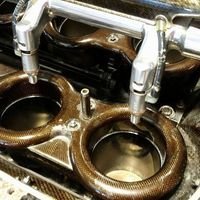Aero Aids, Do They Work? In Particular Gt Wings? Now You Know!
Announcements
-
Similar Content
-
Latest Posts
-
By Dose Pipe Sutututu · Posted
If you think that's harsh, go experience a KAAZ 🥲 Thoughts and prayers for Dose. I had mine modified by a diff shop to make it less brutal, no idea what they did but it's not as brutal as before. The Asian in me was being tight before and went KAAZ instead of a Nismo, lesson learned. -
From what I understand, the normal Nismo diff is a bit harsh, and the Pro is the one that behaves more nicely, and you only pay Nismo tax twice to get it.
-
Thanks lads. Ill go get some more diff oil and have a think about how much friction modifier etc to have in it. For whatever reason the Nismo item feels much clunkier than a shimmed the stock one. I got suckered by the prospect of it pushing a bit less off throttle and ended up with a clunkfest.
-
It's funny , you look at the 1050 and see horror and I see win, 90 @ 20psi for a 68mm wheels seems great to me. But I don't know crap about this stuff. Happy to hear why you'd make another choice, if you can dumb it down for me What I do know is my Garrett's have been insane levels of reliable whilst others have had to have precision and xona rebuilt and I use mine WAY WAY more then they do. I have a GT3582R from 2005 that is still going rock solid. My G35 hasn't missed a beat either and I was one of the first to get one, it gets a lot of use too.
-
Wait a sec…. You pay for bolts at bunnings? I usually just pocket the 1 or 2 bolts I’m short. everything else is courtesy of work
-






Recommended Posts
Create an account or sign in to comment
You need to be a member in order to leave a comment
Create an account
Sign up for a new account in our community. It's easy!
Register a new accountSign in
Already have an account? Sign in here.
Sign In Now